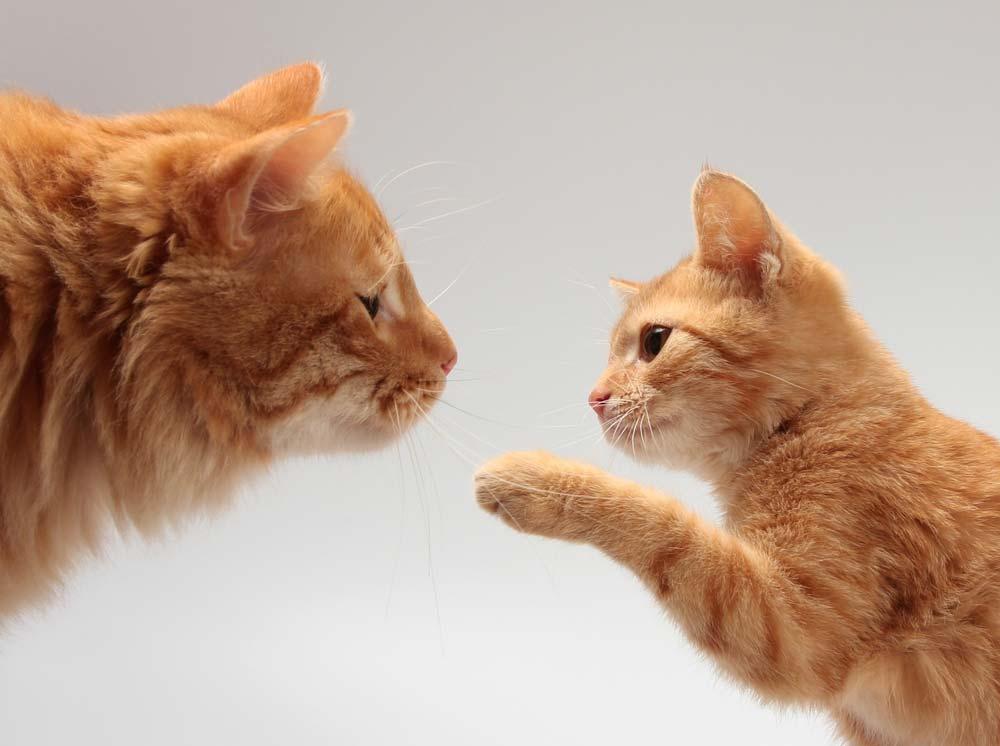Bringing a new kitten into your home can be an exciting and heartwarming experience, but it can also come with its own set of challenges—especially if you already have a resident cat. While many cats adjust well to the presence of a playful little companion, the transition requires thoughtful preparation to ensure a harmonious household.
In this guide, we’ll walk you through the essential steps to make the introduction process as smooth and stress-free as possible. From understanding feline behavior to setting up safe spaces and utilizing positive reinforcement, our tips will help you foster a loving relationship between your new kitten and your existing cat. With the right approach, you’ll not only pave the way for a lifelong friendship between your furry companions but also create a peaceful and happy home for everyone involved. Let’s dive in and explore how to make this important transition a success!
Table of Contents
- Understanding Your Current Cats Temperament
- Creating a Safe Space for the New Kitten
- Gradual Introductions: Steps to Foster Friendship
- Monitoring Interactions and Adjusting as Needed
- Q&A
- To Conclude
Understanding Your Current Cats Temperament
Before welcoming a new kitten into your home, it’s crucial to take a close look at your current cat’s temperament. Every cat has its own unique personality traits that can influence how they react to a newcomer. Understanding these traits can help mitigate potential conflicts and ease the transition for both pets. Consider observing your cat’s behavior in various situations, such as:
Social interactions: Does your cat enjoy the company of other animals?
Stress levels: How does your cat react to changes in their environment?
Territorial behavior: Is your cat possessive over certain spaces or items?
Playfulness: How does your cat engage in play, and does it include roughhousing?
Once you have a clear understanding of your cat’s temperament, you can tailor the introduction process to suit their needs. For instance, if your cat is generally shy or anxious, providing a quiet space for the kitten to explore may help ease your cat’s nerves. Conversely, if your cat is outgoing and playful, they might appreciate a more direct approach to meeting their new friend. Here’s a quick reference table to help outline different temperamental tendencies:
| Temperament | Suggested Approach |
|---|---|
| Shy | Gradual introduction with safe spaces |
| Outgoing | Direct playtime and interactions |
| Aggressive | Careful, monitored introductions |
| Curious | Allow supervised exploration |

Creating a Safe Space for the New Kitten
Bringing a new kitten into your home can be an exhilarating experience, but ensuring their safety and comfort is paramount. Start by designating a specific area in your house as their safe space. This should be a quiet room away from the existing pets, equipped with essential items to make them feel at home. Consider including:
Cozy bedding: A soft bed or blanket for the kitten to curl up on.
Litter box: A clean and easily accessible litter box to encourage good habits.
Toys: Interactive toys that stimulate play and reduce boredom.
Food and water: Fresh supplies in separate bowls to keep them hydrated and nourished.
To further enhance their comfort, ensure the space is free from hazards that might cause anxiety or harm. It’s beneficial to keep the environment familiar and calm. You can help your new kitten adjust by introducing new scents and sounds gradually. A simple table to track their adjustment might look like this:
| Adjustment Aspect | Tips |
|---|---|
| Exposure to smells | Introduce with personal items from resident pets. |
| Sound acclimatization | Use soft music or nature sounds to soothe. |
| Interaction | Gradually allow supervised visits with other pets. |
Gradual Introductions: Steps to Foster Friendship
Introducing a new kitten to your resident cat can be an exciting yet delicate process. To pave the way for a successful friendship, start by allowing them to get accustomed to each other’s scents. You might try the following methods:
- Swap sleeping blankets: Place the kitten’s blanket in the resident cat’s area and vice-versa.
- Use scent cloths: Rub a cloth on one cat and let the other cat smell it.
- Feed near each other: Position their food bowls a safe distance apart to encourage positive associations.
Once they seem comfortable with each other’s scents, it’s time to progress to visual introductions. This can be done through a baby gate or a cracked door. Here are some tips for this phase:
- Keep sessions short: Start with just a few minutes of sight interactions.
- Observe body language: Look for signs of stress or aggression, and stop if necessary.
- Use treats and toys: Reward both cats for calm behavior during meetings to build positive experiences.
Monitoring Interactions and Adjusting as Needed
As you introduce a new kitten to your resident cat, it’s crucial to closely monitor their interactions. Observe their body language and vocalizations to gather information about their comfort levels. Look for signs of anxiety or aggression, such as flattened ears, hissing, or swatting. Positive behaviors to watch for include relaxed postures, gentle sniffing, and playfulness. By being attentive, you can gauge whether to allow them more time together or to separate them for a while. Ensure that their meetings are short and supervised to help manage any potential conflicts.
In addition to observation, be prepared to adjust your approach based on what you see. If either cat shows signs of distress, consider the following strategies:
- Increase the amount of time they spend apart to reduce tension.
- Use positive reinforcement, rewarding calm behavior with treats and affection.
- Introduce additional vertical spaces like cat trees to give both cats their own territory.
Keep a log of their interactions, noting any progress or setbacks, which can help you identify overall trends. As the days pass, you’ll be able to determine when the cats are ready for more freedom in their interactions. Adjusting your strategy along the way will contribute significantly to a peaceful coexistence.
Q&A
Q1: Why is it important to introduce a kitten to a resident cat gradually?
A1: Gradual introductions are crucial for creating a harmonious household. Cats are territorial by nature, and a sudden introduction can lead to stress, aggression, or fear. Taking the time to allow both the kitten and the resident cat to acclimate to each other’s presence will help foster a positive relationship over time.
Q2: What is the first step in the introduction process?
A2: The first step is to create a separate space for the kitten. This area should be equipped with food, water, a litter box, toys, and a cozy bed. Keeping the kitten separated allows both pets to become familiar with each other’s scents without direct contact, which is essential for their comfort and safety.
Q3: How can I help my resident cat adjust to the idea of a new kitten?
A3: You can help your resident cat adjust by introducing them to the kitten’s scent. Swap bedding between the two or gently rub a cloth on the kitten and then let your cat sniff it. You can also engage your cat in playtime or provide treats to create positive associations with the idea of a new friend.
Q4: When should I allow the kitten and resident cat to see each other?
A4: After a week or two of scent swapping and getting used to each other’s presence, you can start visual introductions. This can be done through a baby gate or by cracking a door open so they can see each other without direct contact. Observe their reactions; if they seem curious and calm, that’s a good sign. If they appear stressed or aggressive, take a step back and give it more time.
Q5: What signs should I look for during the introductions?
A5: Watch for body language. If the resident cat hisses, growls, or displays a defensive posture, it’s best to slow down the process. Positive signs include relaxed body postures, slow blinks, and sniffing each other through barriers. This indicates a willingness to coexist peacefully.
Q6: How long might the introduction process take?
A6: The introduction process can vary greatly between individual cats. It can take anywhere from a few days to several weeks. Patience is key—rushing the process can lead to setbacks. Always prioritize the comfort of both your resident cat and the new kitten.
Q7: What should I do if the introduction doesn’t go as planned?
A7: If things don’t go as expected, don’t panic! This is common. Take a break and give both pets some time apart from each other. You can return to scent swapping and visual introductions before attempting direct interactions again. Consult with a veterinarian or an animal behaviorist if you’re unsure about how to proceed.
Q8: Are there any additional tips to ease the transition?
A8: Absolutely! Providing separate resources (like food bowls, litter boxes, and beds) is essential to reduce competition. Keeping the interactions positive with plenty of treats, praise, and playtime can help foster a friendly atmosphere. Lastly, give your resident cat extra attention during this adjustment period to ensure they don’t feel neglected.
Q9: Can I expect my cat and kitten to become best friends?
A9: While some cats become inseparable companions, others may simply learn to tolerate each other. Every cat has its own personality, and the bond between them will develop naturally over time. Just focus on creating a peaceful environment, and let them dictate the pace of their relationship.
Q10: When can I consider the introduction successful?
A10: You can consider the introduction successful when both animals can comfortably interact without signs of stress or aggression. Mutual grooming, playing together, or peacefully coexisting in the same space are all positive indicators of a successful transition! Celebrate these moments and continue to nurture their developing bond.
To Conclude
introducing a kitten to your resident cat can be a rewarding experience when approached with patience and care. By taking the time to prepare both your home and your pets for this new dynamic, you can help foster a harmonious relationship between them. Remember, every cat has its own personality and pace, so it’s essential to respect their individual needs throughout the process. With gentle introductions, positive reinforcement, and a little bit of time, you can create a warm and loving environment where both your new kitten and your existing cat can thrive together. Good luck on your journey to expanding your furry family, and enjoy the delightful moments that await as they grow to become friends!














